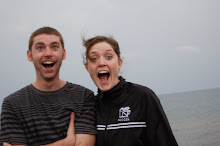

With an estimated worldwide television audience of 200 million, the 32 national teams finally discovered their fate in the Final Draw for the 2010 FIFA World Cup, making the world’s biggest sport spectacle finally seem within reach – only 184 days to go.
Dusting off their country’s flags from the 2006 Cup, fans across the world are preparing themselves for the 19th FIFA World Cup taking place in South Africa.
Along with the eight groups decided on Friday, Dec. 4, the official World Cup match ball was announced. After much anticipation, Adidas released the newly innovated ball, “Jabulani” – meaning “to celebrate” in isiZulu. It features 11 different colors representing the 11 players in every team, the 11 official languages of South Africa and the 11 South African tribes. The new ball is also the eleventh Adidas World Cup Match Ball.
The commonly-known traditional black and white football has 32 panels. But with a little engineering, the ball can be altered in its air travel predictability and how it feels on the foot.
By thermally bonding the panels together, having three-dimensional outer panels (versus bending flat panels into a spherical shape) and eliminating possible inconsistencies of stitching, the 2006 Adidas “Teamgeist” ball only had 12 panels and achieved better accuracy for players.
However, controversy arose with the Teamgeist when players and football fans alike questioned the makers objective when crafting the ball. The ball was said to favor strikers because of its lack of rotation in the air – making its flight difficult to judge by opponents. Not only did this benefit the strikers, but it made it extremely difficult and unfair for goalkeepers.
Jabulani is said to have easily exceeded the 2006 Adidas Teamgeist.
To avoid conflict this time, Adidas gave the new Jabulani ball “aero grooves” – long that indentations run along the panels in a specific pattern to help give the ball consistent trajectory. Also, condensing the panel size even more, there are only eight panels (made of EVA and TPU), with fewer seams – providing a 70 percent larger striking surface. Furthermore, small, raised “microtexture” grooves also allow the players to have more foot control.
With wind tunnel testing and internal robotic kicking testing at Loughborough University in England, Jabulani is considered the roundest, most accurate ball ever. Pricing at $150 a ball, let’s hope this ball lives up to its maker’s hype.
To celebrate the ball and the World Cup draw, Adidas hosted celebrations not only in South Africa, but all over the world. In the United States, U.S. National Team players Jimmy Conrad and Sacha Kljestan were joined by Adidas North America President Patrik Nilsson at the Union Station in Washington, D.C., while U.S. National Team player Stuart Holden and Major League Soccer’s all-time leading goal scorer Jamie Moreno of D.C. United were joined by South African Ambassador to the U.S. Welile Nhlapo at the Third Street Promenade in Santa Monica, Calif. to present and unveil Jabulani.
Every four years, teams fielded by the best football nations around the globe meet to battle it out on the pitch for the title “World’s Greatest” – it’s no wonder so much is put into showcasing the World’s most-popular sport.

No comments:
Post a Comment